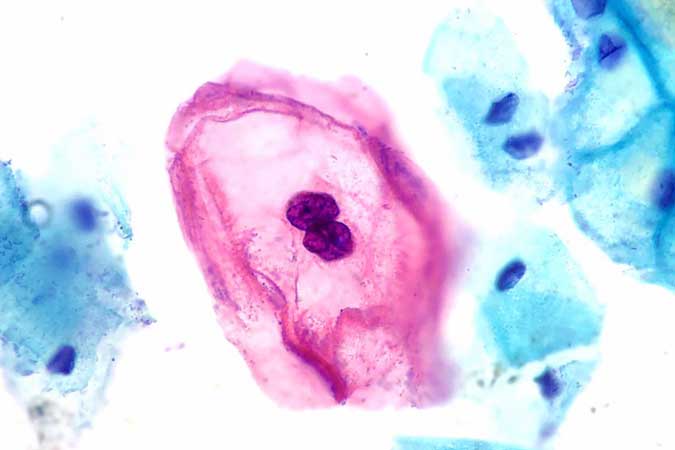
As the Philippines continues to grapple with cervical cancer, a community-based screening-to-treatment model that can be integrated at the national level was presented on Tuesday to expand screening coverage among women and improve access to care.
Cervical cancer is the country’s second most common cancer among women, with an estimated 8,549 cases and 4,380 deaths in 2022, according to the report of Global Cancer Observatory (GLOBOCAN).
This underscores the need for more accessible and early detection efforts through human papillomavirus (HPV) testing, the main culprit behind cervical cancer, where only 1% of eligible Filipina women have been screened.
The Centralized Laboratory Model for HPV DNA Screening (CLAMS) aims to provide more accessible and faster cervical cancer screening through a one-stop hub offering women comprehensive services, from screening to treatment.
The hub has already screened 4,969 women across Metro Manila, led by Jhpiego, a nonprofit global health organization.
“We call it the centralized laboratory model because it could be a near point of care, mismo sa health facility mo [We call it the centralized laboratory model because it could serve as a near point of care, right at your health facility],” Dr. Ingrid R. Magnata, Jhipego’s program manager to the Philippines, told BusinessWorld at the sidelines of the media launch.
CLAM hubs highlight the use of modern Human Papillomavirus (HPV) DNA testing kits, which are faster, more accurate, and can be self-collected by patients in just two to three minutes before being sent to the laboratory.
In Quezon City, Karen See, a physician, and the city’s cancer control coordinator, said CLAM has helped the city reach remote areas, including workplaces, through self-testing sample collection.
“You don’t need a private room to lie down. Sometimes workplaces don’t even have a clinic or anything like that. Self-testing is better, and we just show people how to do it,” Ms. See said during the event in both mixed English and Tagalog.
The self-collection method allows pooled testing, letting over a hundred women be screened per day, compared to just five to ten with the conventional physician-led method, Ms. Magnata said.
If tested positive for HPV, the hub also offers thermal ablation treatment, which addresses precancerous lesions, upon a physician’s advice.
Of the nearly 5,000 women screened, 7% tested positive, with 190 receiving timely preventive treatment and referrals to health facilities when necessary.
Beyond Metro Manila, CLAM is set to expand through digital patient navigation in public health laboratories, aiming to reach 5,000 women in Cebu and 2,500 in Davao City.
Ms. Magnata said that talks are also ongoing with the Department of Health to propose integrating CLAMs into the national cervical cancer elimination plan.
So there is a phase two to this project. We’re doing a geographic expansion. So we’re testing the same model with a bit more refinements.
We’re doing a digital selection for patient navigation. Yes. And then also we are testing the model in a public health laboratory, a central public health laboratory.
So that would mean Cebu to reach 5,000 women, Davao City for 2,500 women. And in Taipei, we will continue to develop what is the healthcare provider network and back-up workplaces as points and primary healthcare providers, because we spend most of our working hours at work. So all in all, that’s another 10,000 women that will be reached by the plans.
So as what we are seeing in our report, we’re just seeing like 54%. So it means that not all of them are returning, although they were found positive, they’re not returning.
So aside from strengthening the counseling component, but rather we need to have this mechanism to really look into the support of the community and then the primary health care providers at the facility level, at the community level. – Edg Adrian A. Eva



